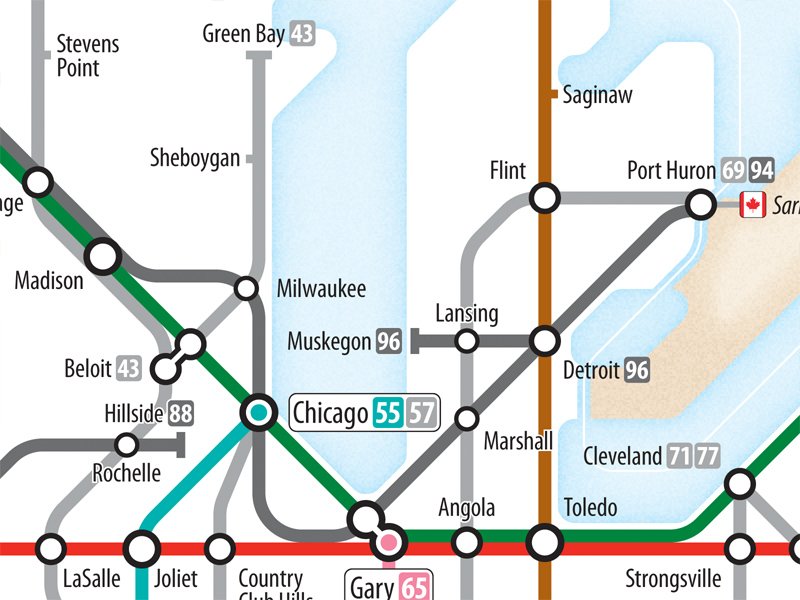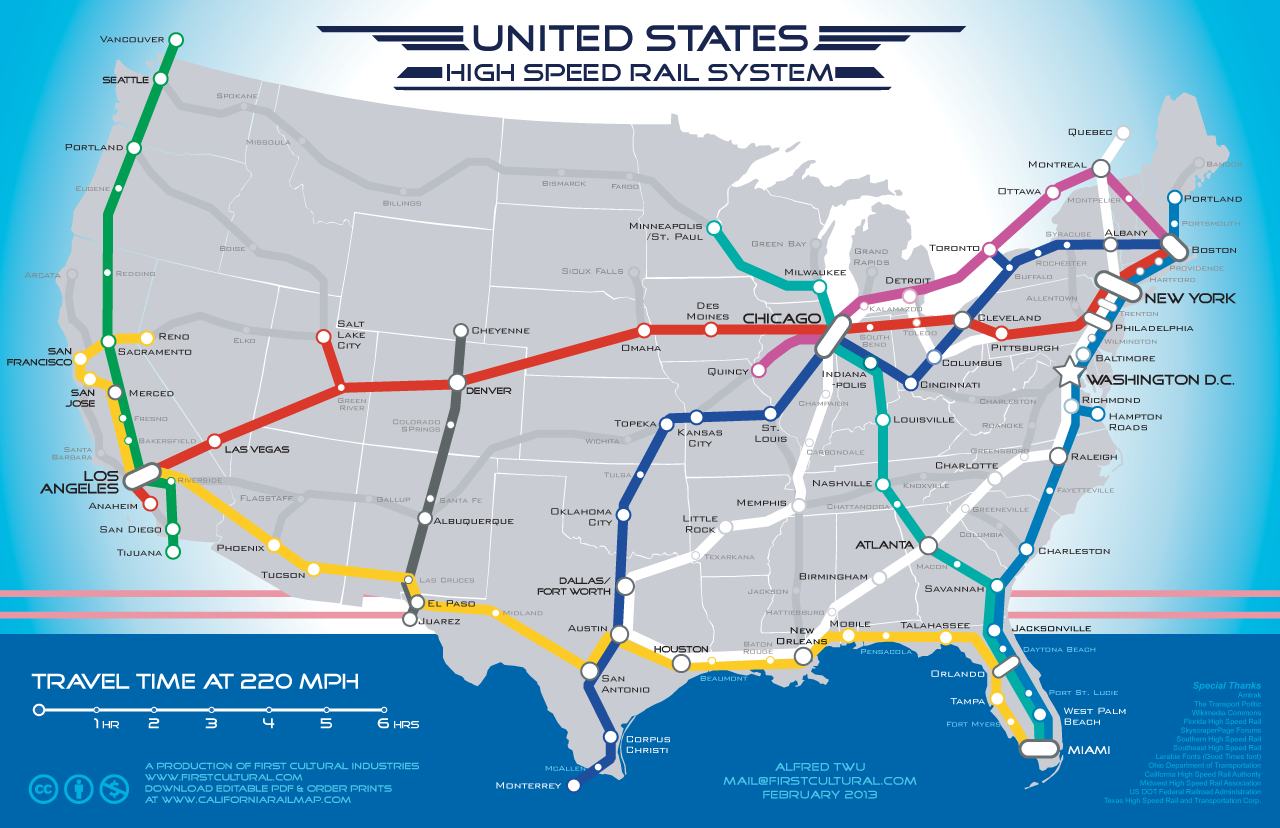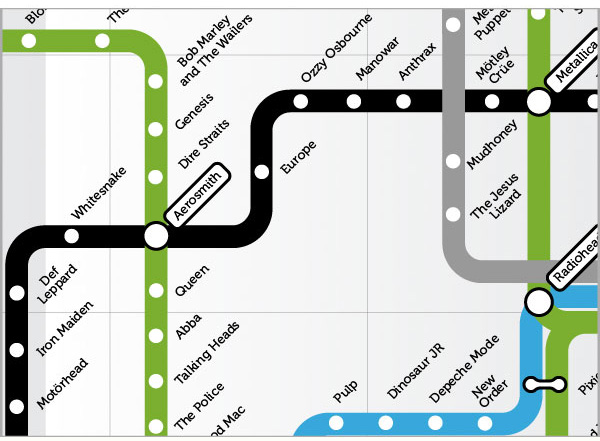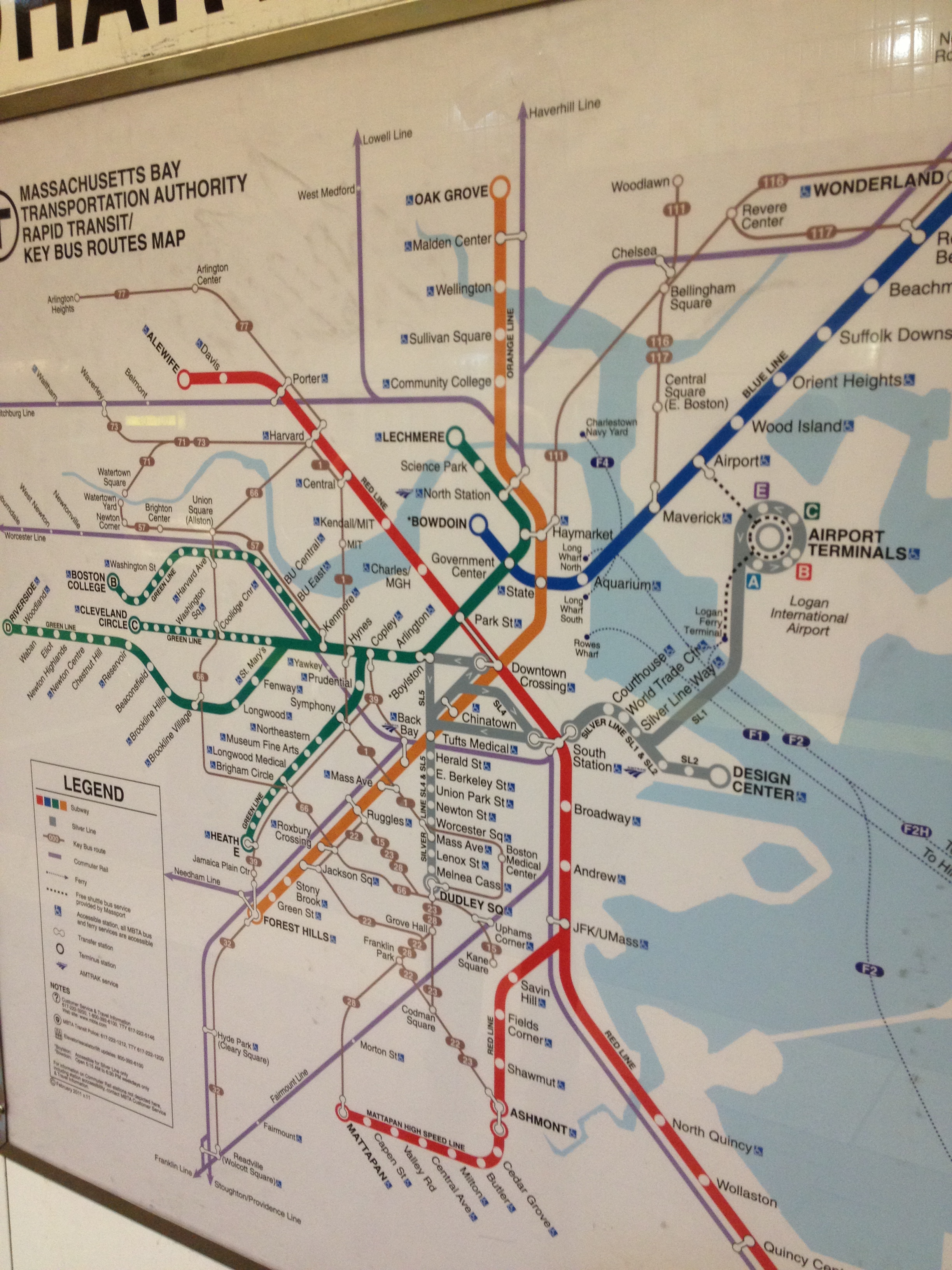 Cartographers have long had a quirky, and sometimes strange, fascination with transit maps. Since the days of Harry Beck and the first London Tube maps, an entire cartographic subculture has grown around them. No longer just limited to metropolitan transit systems, authors and map creators now use them to represent everything from river systems to rock ‘n roll. Maps are, by definition, abstract visual representations and transit maps are no different. However, transit maps are especially notable. Very few visual graphics can communicate complex messages as quickly and efficiently, distill important features out out of an incredible amount of information with such ease, and seamlessly embed an illustrative sense of place and personality as a transit map. Perhaps most remarkable, and where in lies the fascination, is the abandonment of spatial relation and reliance almost solely on logical relation.
Cartographers have long had a quirky, and sometimes strange, fascination with transit maps. Since the days of Harry Beck and the first London Tube maps, an entire cartographic subculture has grown around them. No longer just limited to metropolitan transit systems, authors and map creators now use them to represent everything from river systems to rock ‘n roll. Maps are, by definition, abstract visual representations and transit maps are no different. However, transit maps are especially notable. Very few visual graphics can communicate complex messages as quickly and efficiently, distill important features out out of an incredible amount of information with such ease, and seamlessly embed an illustrative sense of place and personality as a transit map. Perhaps most remarkable, and where in lies the fascination, is the abandonment of spatial relation and reliance almost solely on logical relation.
Transit maps are far from
what might publicly be considered a “normal” transportation map. Take the Interstate Tube Map by Cameron Booth for an example. When many think of maps, especially those used for transportation, there is an expected element of spatial accuracy, relation, and scale. One inch is equal to 100 miles… this town is directly south of this town… etc. These principles are bent, skewed, or even completely ignored in transit mapping. A transit map instead relies on points of interest and major landmarks to guide people in and around a community, and cartographers must not only have knowledge of the physical surroundings, but also intricate knowledge of their cultural subject matter.
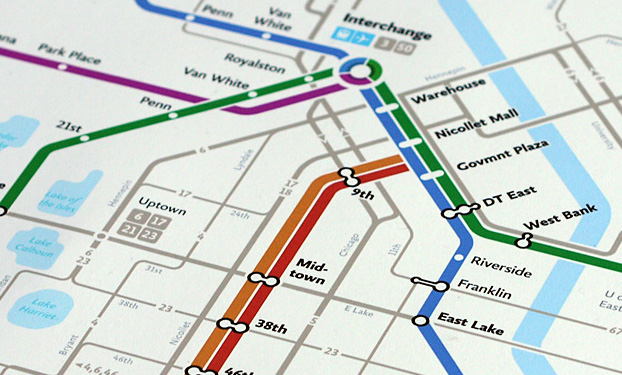 People use these types of navigational techniques and use logical relation everyday in a process called cognitive cartography, or mental mapping. Mental maps are created in the mind of an individual and represent an individuals point-of-view perception of space within their own world. The most prominent Mental Map researcher was perhaps Kevin Lynch, an Urban Planning Professor at MIT, and the author of The Image of the City. Everyone creates Mental Maps, and they consist of the pictures in our head displaying landmarks used to navigate and way-find through everyday life. Mental maps are highly unique, but within a community there will be certain commonalities. Transit maps offer intrigue because in some ways they are the most mainstream and widely accepted example of mental mapping in the field. They expand beyond the individual, grabbing commonalities and features from many people, and can represent the collective “mental map” of a community.
People use these types of navigational techniques and use logical relation everyday in a process called cognitive cartography, or mental mapping. Mental maps are created in the mind of an individual and represent an individuals point-of-view perception of space within their own world. The most prominent Mental Map researcher was perhaps Kevin Lynch, an Urban Planning Professor at MIT, and the author of The Image of the City. Everyone creates Mental Maps, and they consist of the pictures in our head displaying landmarks used to navigate and way-find through everyday life. Mental maps are highly unique, but within a community there will be certain commonalities. Transit maps offer intrigue because in some ways they are the most mainstream and widely accepted example of mental mapping in the field. They expand beyond the individual, grabbing commonalities and features from many people, and can represent the collective “mental map” of a community.
Transit maps can be utilitarian, but because of the extensive use of logical relation, they have an uncanny ability to show dreams and display fantasies with ease. Of course, all maps can do this, but transit maps have the ability to do so with the stroke of a few clean, primary-colored lines. Used correctly, transit maps can be highly effective tools to describe complex concepts in a simple manner, propose large projects, or further an agenda (see some maps made of a dream United States High Speed Rail System).
Essentially anything you can assemble into a system can be displayed in a transit map form, such as a collection of water drainage features and rivers, but you can also map the fantastic. Creative cartographers and adventurous authors have mapped everything from classic movies to internet trends to rock n roll.
Who knew you could listen to Aerosmith and take the Green Line to Bon Jovi?! Happy Mapping.
-Mike
(A shoutout to the folks at Carticulate, you don’t even know the number of times I have pointed people to your color-coded skyway map.)


